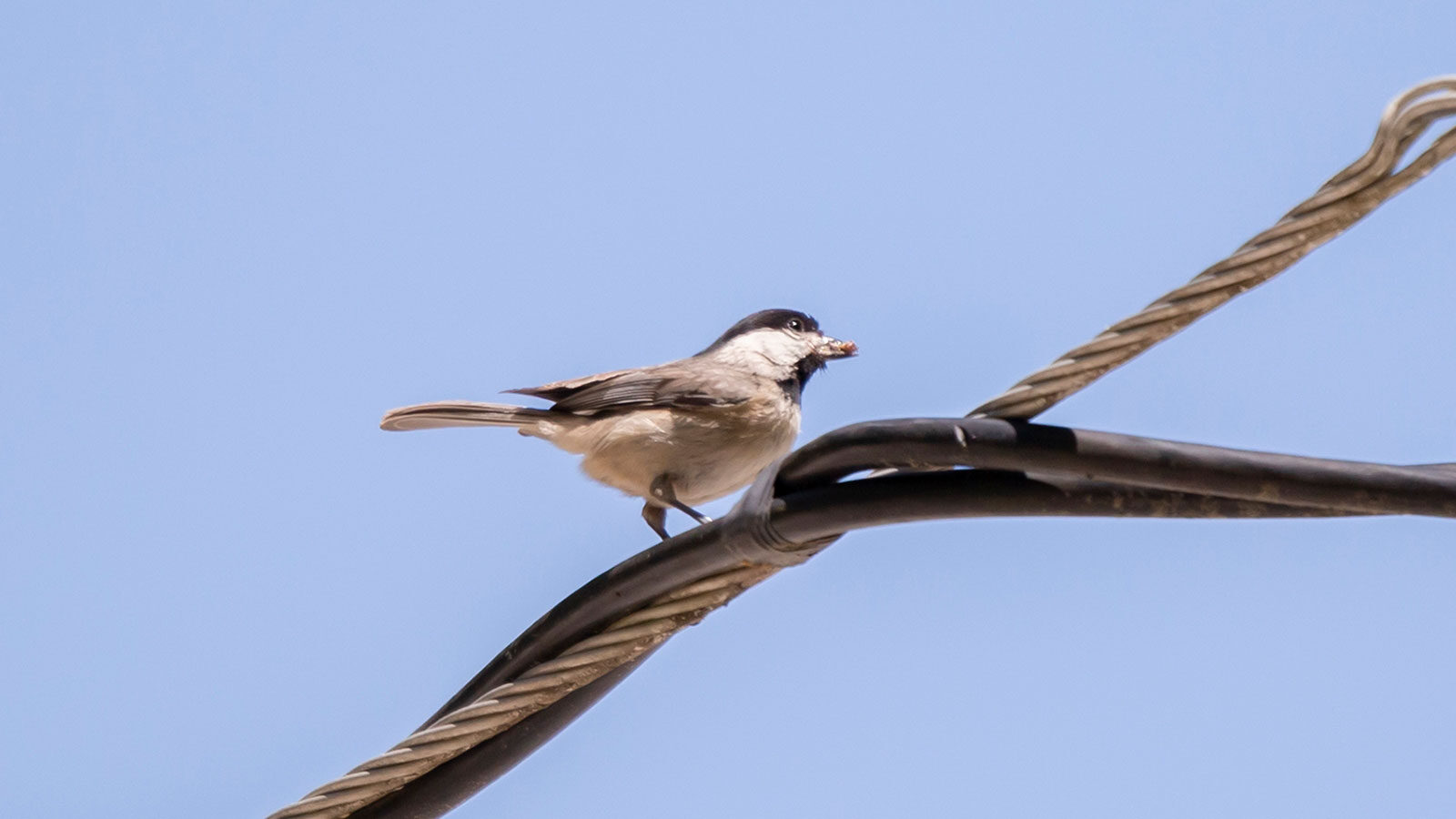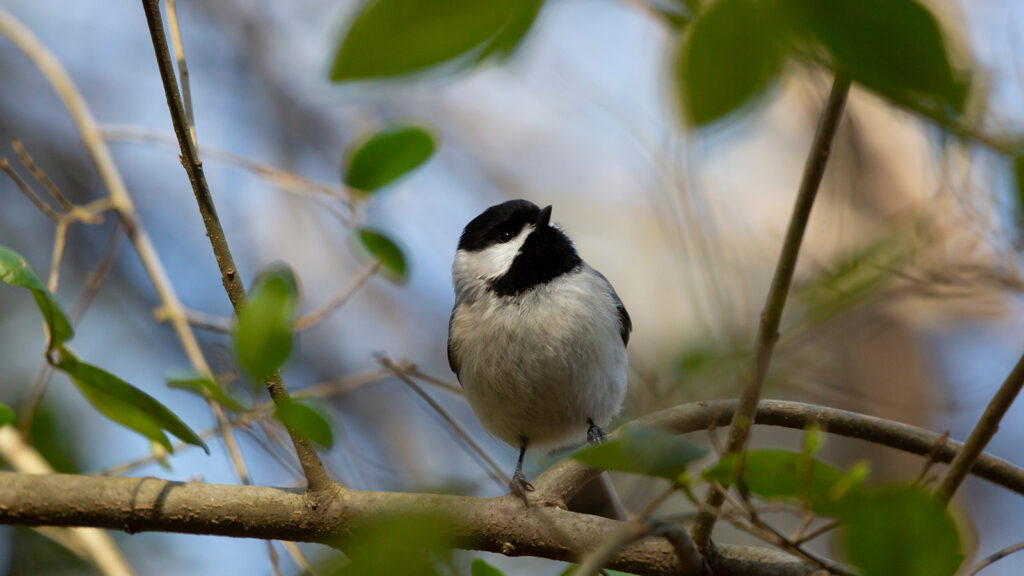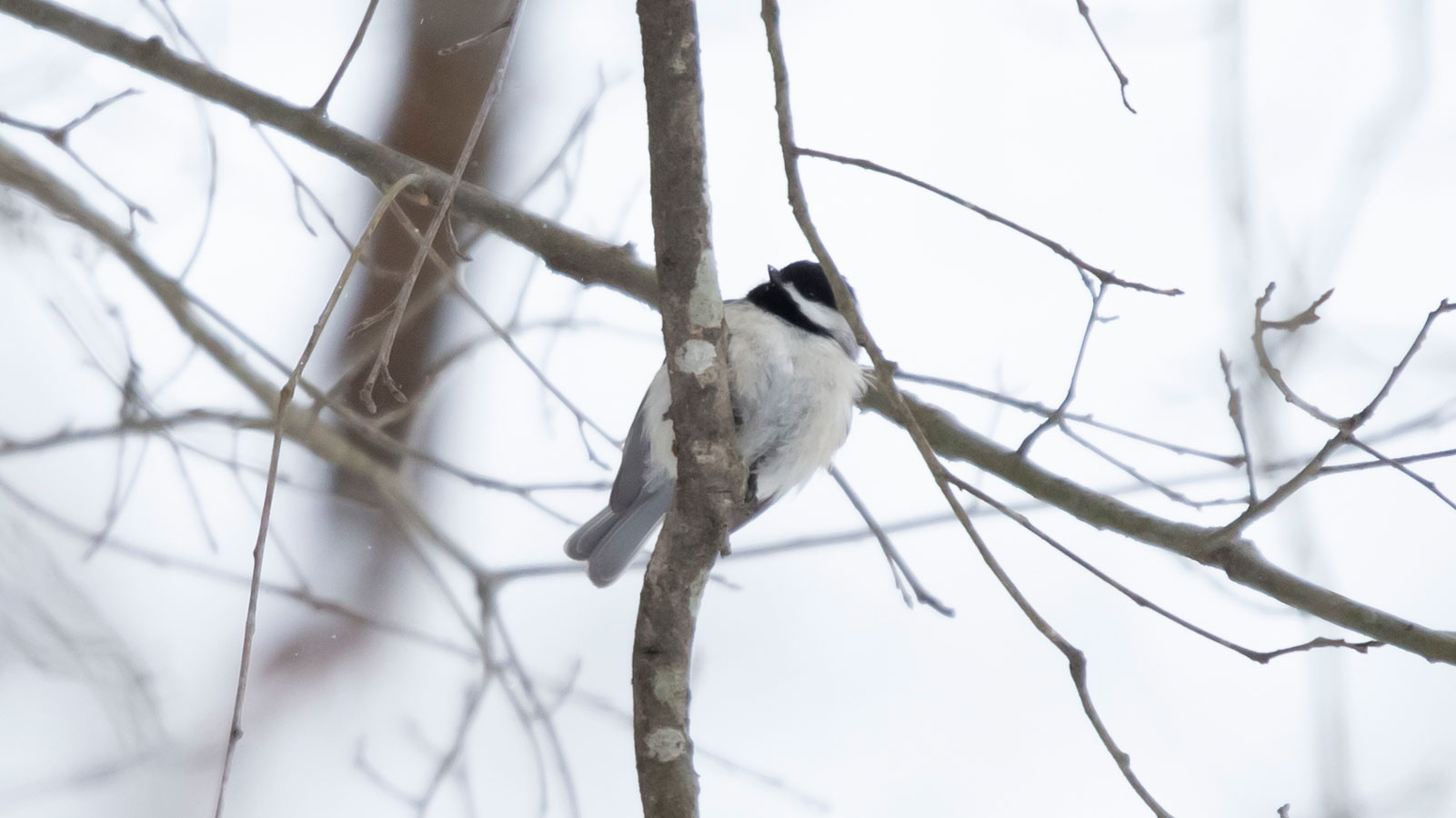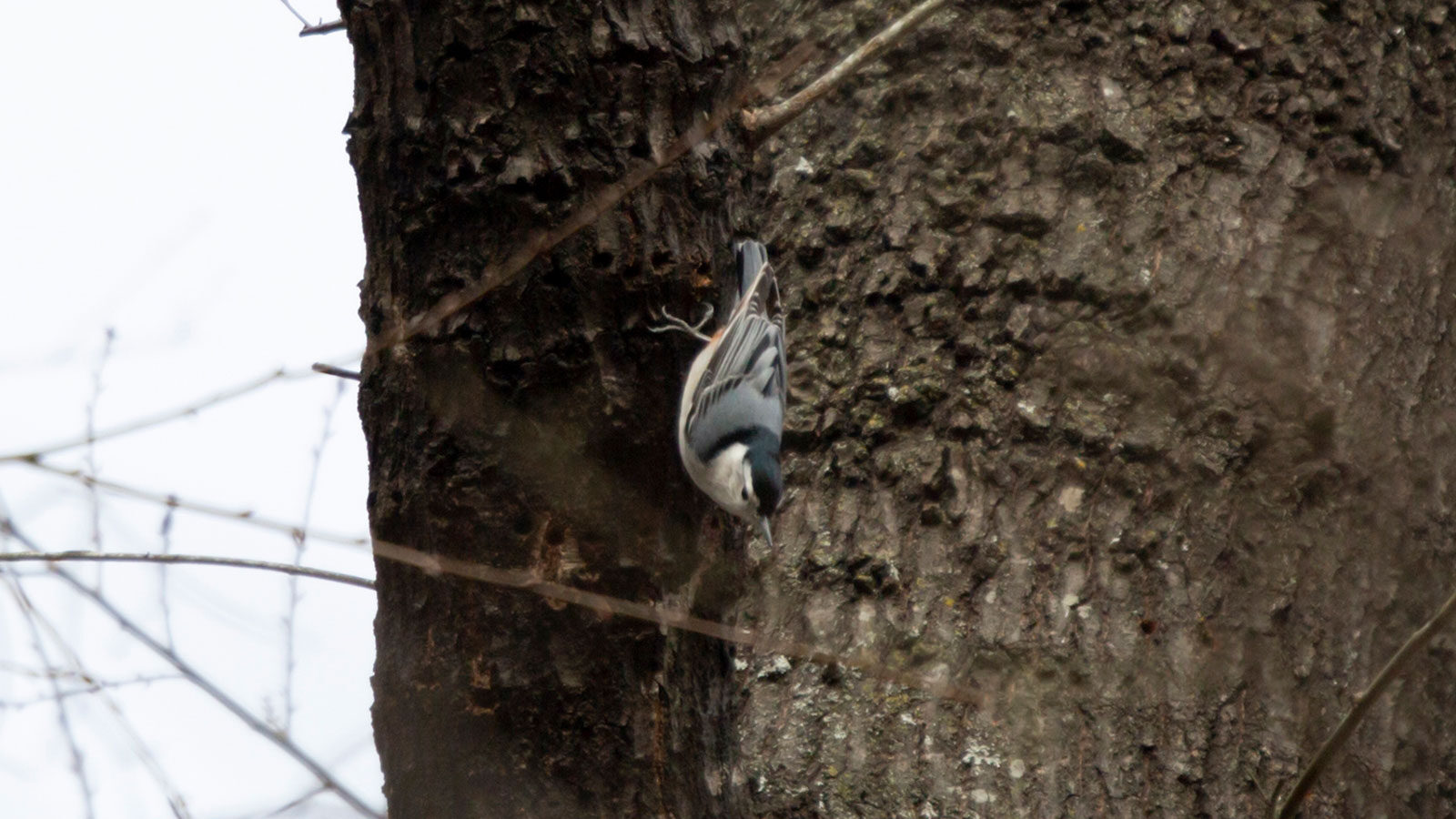
Did you know that Carolina chickadees can breed with black-capped chickadees?
Carolina Chickadees
at
a Glance

Key Features:
Carolina chickadees are small birds with gray bodies, white bellies, black heads black throats, and black beaks.
Least Concern - Population Stable
Habitat:
Forests, swamps, open woods, parks, and residential areas
nesting habits:
Carolina chickadees build their nests in unused cavities at the edges of forests out of bark, hair, moss, and plant fiber.
seasons carolina chickadees are active in our area:
All year
Diet:
Bugs, spiders, plants, and seeds
hunting Behavior:
Carolina chickadees glean from foliage.
Commonly Confused With:
White-Breasted Nuthatches
Carolina chickadees are often confused with white-breasted nuthatches because both are small black, white, and gray birds.

Carolina chickadees have black throats. White-breasted nuthatches have longer beaks and shorter tails.
